- Wallace State Community College offers a variety of degrees and programs in an attempt to meet the needs, interests, and abilities of the students within the service area of the College. Wallace State Community College is authorized to offer programs leading to the Associate in Arts Degree, Associate in Science Degree, and Associate in Applied Science Degree. Certificate programs are also offered in certain subject areas.
School Highlights
George C Wallace State Community College-Hanceville serves 8,169 students (33% of students are full-time).
The college's student:teacher ratio of 22:1 is higher than the state community college average of 20:1.
Minority enrollment is 22% of the student body (majority Hispanic and Black), which is less than the state average of 43%.
Quick Stats (2025)
- Enrollment: 8,169 students
- In-state tuition: $4,260
- Out-state tuition: $7,650
- Student:teacher ratio: 22:1
- Minority enrollment: 22%
- Source: Integrated Postsecondary Education Data System (IPEDS)
Top Rankings
George C Wallace State Community College-Hanceville ranks among the top 20% of public schools in Alabama for:
School Overview
The teacher population of 365 teachers has stayed relatively flat over five years.
George C Wallace State Community College-Hanceville
(AL) Community College Avg.
Carnegie Classification
Associate's Colleges: High Career & Technical-High Traditional
Associate's Colleges: Mixed Transfer/Career & Technical-High Traditional
Institution Level
At least 2 but less than 4 years
At least 2 but less than 4 years
Institution Control
Public
Public
Total Faculty
365 staff
153 staff
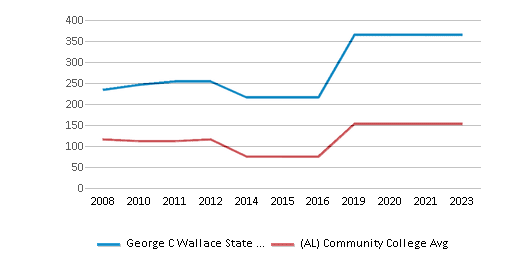
School Calendar
Student Body
The student population of George C Wallace State Community College-Hanceville has grown by 63% over five years.
The student:teacher ratio of 22:1 has increased from 13:1 over five years.
The George C Wallace State Community College-Hanceville diversity score of 0.38 is less than the state average of 0.60. The school's diversity has grown by 8% over five years.
Total Enrollment
8,169 students
2,464 students
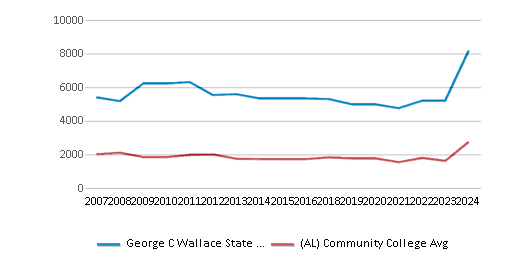
Student : Teacher Ratio
22:1
20:1
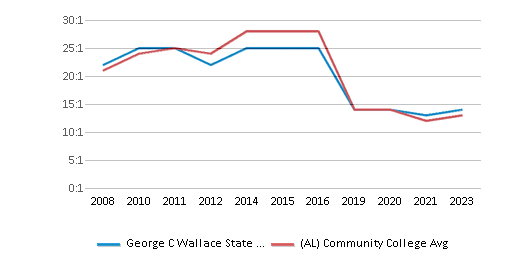
# Full-Time Students
2,706 students
873 students
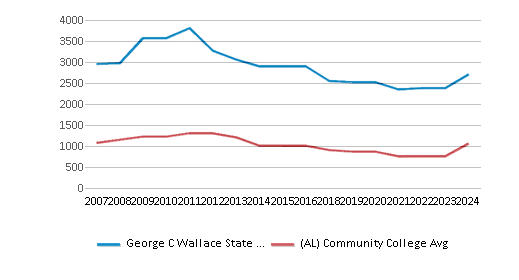
# Part-Time Students
5,463 students
1,855 students
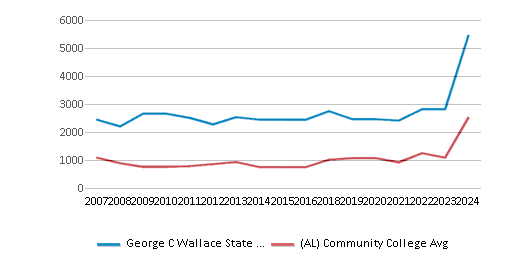

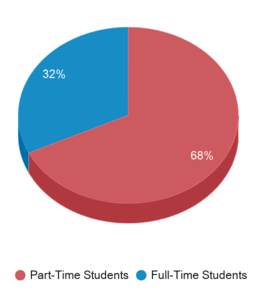
# Enrollment Undergraduate
816 students
422 students
# Full-Time Undergraduate Students
2,706 students
873 students
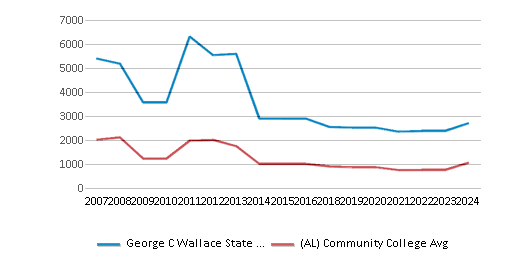
# Full-Time Graduate Students
n/a
11 students
# Part-Time Undergraduate Students
5,463 students
2,077 students
# Part-Time Graduate Students
n/a
30 students
Total Dormitory Capacity
180 students
168 students

% American Indian/Alaskan
1%
n/a
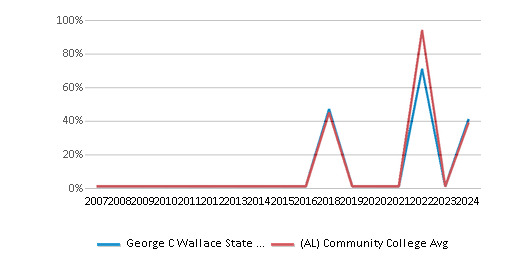
% Asian
1%
2%

% Hispanic
9%
6%
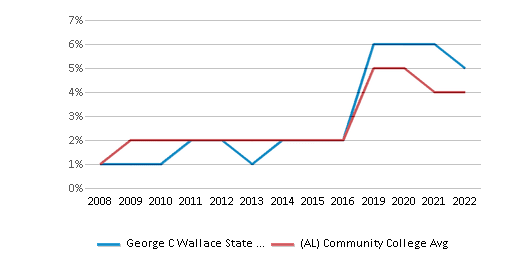
% Black
7%
27%
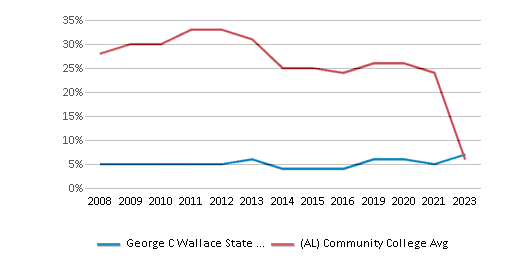
% White
78%
57%
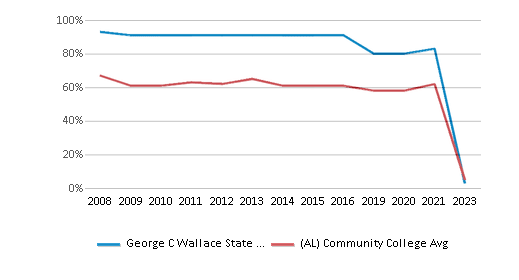
% Hawaiian
n/a
n/a
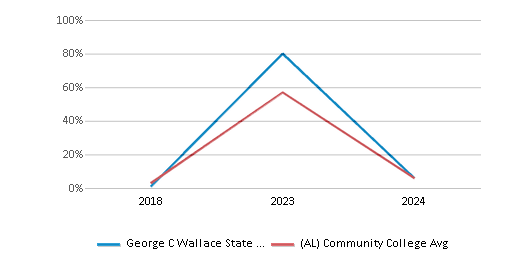
% Two or more races
4%
4%
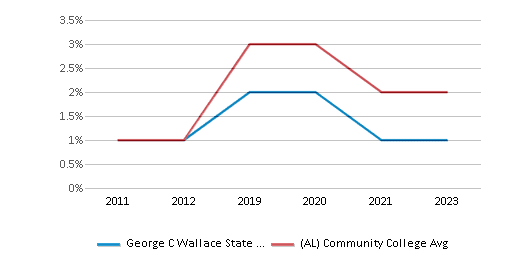
% Non Resident races
1%
1%
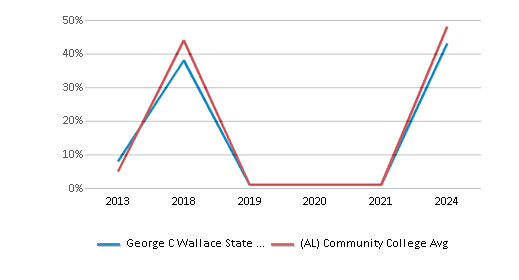
% Unknown races
n/a
3%
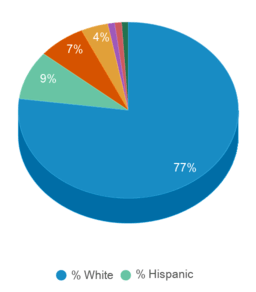
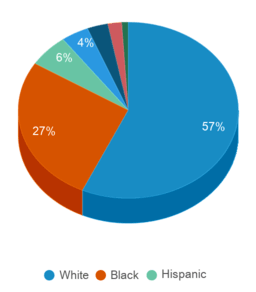
Diversity Score
0.38
0.60

College Completion Rate (Students who graduate in less than 4 years)
0.454%
0.2683%
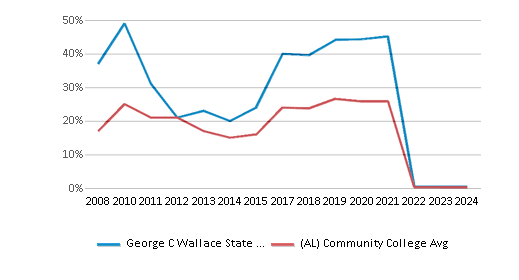
College Completion Rate (Students who graduate in 4 years or more than 4 years)
n/a
0.3%
Average Graduate Earnings (10 Years)
$30,800
$29,700
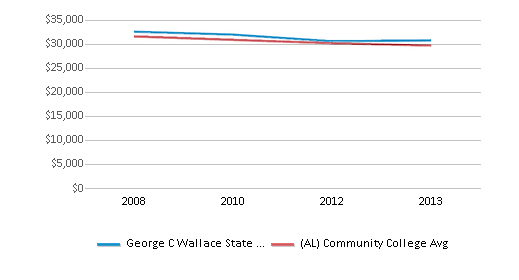
Tuition and Acceptance Rate
The public in-state tuition of $4,260 is more than the state average of $4,077. The in-state tuition has declined by 12% over four years.
The public out-state tuition of $7,650 is more than the state average of $7,206. The out-state tuition has declined by 13% over four years.
In-State Tuition Fees
$4,260
$4,077
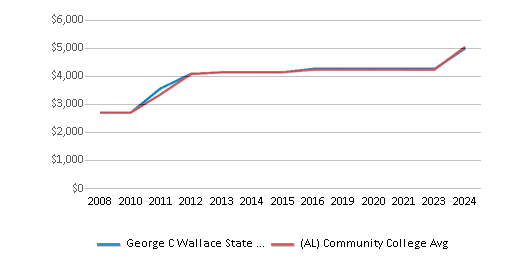
Out-State Tuition Fees
$7,650
$7,206
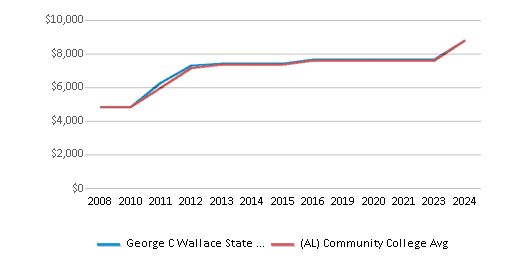
% Students Receiving Some Financial Aid
93%
90%

Median Debt for Graduates
$11,000
$10,500
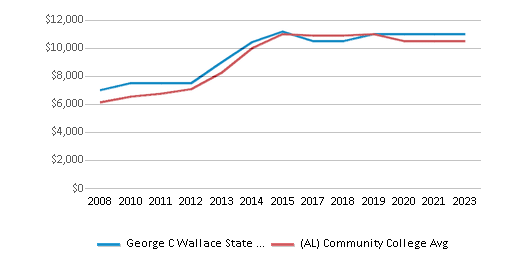
Median Debt for Dropouts
$6,625
$5,500
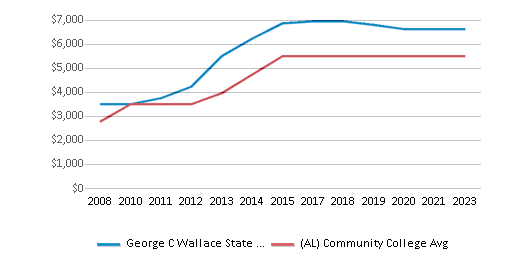
Acceptance Rate
n/a
81%
SAT Reading
n/a
530
SAT Math
n/a
545
ACT Composite
n/a
23
ACT English
n/a
21
ACT Math
n/a
22
Source: 2024 (or latest year available) Integrated Postsecondary Education Data System (IPEDS)
School Notes
- Wallace State Community College is an academic and technical college which provides customized training programs for business and industry. Provide programs and services to assist individuals' transition from economic dependency to self-sufficiency. Provide instruction and activities that develop students' broad-based technical skills and occupation-specific skills including but not limited to, academic skills, computer skills and other technological competencies, problem solving and analytical skills, work ethics, interpersonal skills understanding of business principles and economic concepts, and employability skills. Wallace State offers the widest variety of health programs of any community college in Alabama. Each health science program actively seeks national accredition through their speciality organization to demonstrate the quality of our educational programs. If state or national credentialing is available, the health science program prepares students to take that exam upon program completion. Our online courses offer you convenience and flexibility by allowing you to access self-paced training whenever and wherever you want to. Complete audio narration, in-depth topic coverage, interactive simulations, hands-on exercises, video clips, animation, and graphics create enjoyable training designed to help you learn new skills rapidly.
Frequently Asked Questions
How much does George C Wallace State Community College-Hanceville cost?
George C Wallace State Community College-Hanceville's tuition is approximately $4,260 for In-State students and $7,650 for Out-State students.
What is George C Wallace State Community College-Hanceville's ranking?
George C Wallace State Community College-Hanceville ranks among the top 20% of community college in Alabama for: Largest student body and Highest completion rates.
Recent Articles

Obtaining Your Bachelor's Degree at a Community College
Explore the evolving landscape of community colleges offering bachelor's degrees, addressing affordability, accessibility, and workforce needs.

A to Z of Community College Certificates and Courses
From business and healthcare to technology and skilled trades, the article showcases the breadth of options available to students seeking to enhance their knowledge, develop new skills, or pursue career advancement.

What is a Community College?
This comprehensive guide explains what a community college is, its history, and its role in higher education. It covers the types of programs offered, differences from four-year colleges, benefits of attending, and important considerations for prospective students, providing valuable insights for those exploring educational options.





